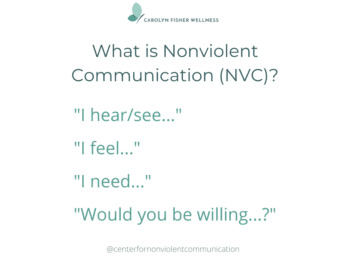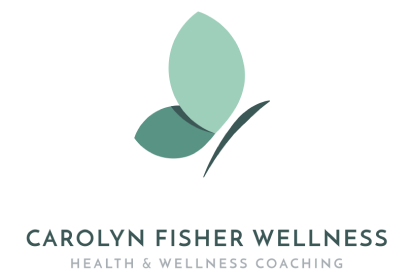Hello, Friends! If you set New Year’s resolutions or intentions to build healthy habits last week (or if you’re reading this another time of year think of any goals you’re working on) what’s been going well?
If you’re feeling good about your effort, keep it up!
If you’re struggling that’s okay because it means you’re trying. If you keep trying and focus on the positive, using creativity and self-compassion along the way, you will see and feel the results of your hard work, maybe sooner than you think. (Make sure you use “SMART” behavioral goals to bring clarity and (relative) ease to your journey.)
My Favorite Wellness Resources
This week I’ve put together a list of some of my favorite health and wellness resources. I’ve personally used all of them (except the smoking cessation resources) to support my success in becoming healthier and happier.
The list below is organized by the six areas of Lifestyle Medicine, an approach that uses healthy lifestyle habits to prevent, treat, and sometimes even reverse chronic disease.
Regardless of your age, health status, or family history research shows that establishing healthy habits in the following areas will help you live longer and better.
- Nutrition
- Exercise
- Sleep
- Stress
- Relationships
- Risky Substances
If this list feels overwhelming remember that creating health and wellness is truly a journey that takes time. I encourage you to choose one baby step and take it one day at a time.
Also, know that starting a habit in one area often leads to positive outcomes in other areas. For instance, exercise can lead to more restful sleep which can provide stress relief. (This is exactly what happened for me almost 10 years ago and it changed my life.)
Most importantly, always check with your health care provider before making changes to your diet or exercise routine.
Nutrition
Eat mostly whole, plant-based foods rich in fiber and phytonutrients (i.e., vegetables, fruit, beans, lentils, whole grains, nuts, and seeds)
These are my favorite recipes available online. I like the Physicians Committee for Responsible Medicine and Forks Over Knives recipes because they are delicious, relatively low-effort, and most ingredients I already have on hand. Minimalist Baker recipes aren’t all oil-free and require more effort but in my opinion are worth the time.
- Free: Forks Over Knives recipes (Try the “No-Tuna” salad sandwich made from chickpeas and tahini. Seriously delish and legit tuna-like.)
- Free: Minimalist Baker recipes Try this bursting-with-flavor kale roasted broccoli salad with the miso ginger dressing. The recipes note how to sub water or nut butters, etc. for oil and butter when possible. (Not all recipes are plant-based however there’s a dedicated page you can search from.)
- Low-cost: Forks Over Knives recipe app (one-time fee of $4.99)
- Worth the investment: Forks Over Knives meal planner (starting at $9.99/mo. The planner makes it SUPER easy to adjust portions, make a grocery list, and delegate prep work.)
Exercise
Regular and consistent physical activity is an essential piece of the optimal health equation. Working up to 150 minutes per week of moderate cardiovascular activity (such as going for a walk) is a great goal.
These tools have helped me feel lighter and stronger during the pandemic. I will be doing HIITBURN bodyweight workouts for life. Seriously, they’re perfect: short, fun, and effective and my muscles aren’t as sore after so I can work out more often than when I was lifting weights. The workouts are a simple follow-along format (with minimal voice-over coaching and with music or without) led by Kelsey Heenan, half of the adorable husband-wife team behind HIITBURN.
- Free: HIITBURN YouTube channel
- Low-cost: HIITBURN app (Free 30-day trial. After trial $19.99/mo. or $189 for lifetime access)
- Worth the investment: Yo Gorilla Exercise Mat ($200 or less. I have the basic 6’x4” mat and love it. It makes the living room feel more like a gym and doesn’t slide around on the carpet as some mats do.)
Sleep
Restful sleep is a necessity (not a luxury) that impacts many functions of our brain and body. While sleep needs vary, most adults need 7-8 hours every 24 hours.
- Free: Sleep is Your Superpower video e-course (Free with one-month trial to LinkedIn Learning. [Don’t forget to cancel within 30 days or you’ll be charged $29.99 for another month.] This is a 34-minute course that teaches you how to create a sleep routine and goals to change sleep habits gradually until you are sleeping like a baby and waking up feeling rested and refreshed.
- Low-cost: Blue-light blocking anti-glare glasses (Prices vary. I bought the pair linked here for $18 however there are less expensive ones, available with or without magnification. They’ve made a huge difference for me. Working on a screen is much more pleasant and I noticed right away that I was able to wind down and fall asleep more quickly.)
- Worth the investment: Weighted blanket (Prices vary. This blanket ($65) was a Christmas gift. [I don’t see a Pine & River website so I’ve included the Amazon link.] I wish I had known about weighted blankets sooner! I sleep more soundly now and remember waking up once or twice a night instead of several times. Most days I am waking up feeling rested before my alarm goes off.
Tip: Drinking alcohol before bed can impact sleep quality by decreasing the time spent in REM (rapid eye movement) sleep which affects mood and memory. If you have a glass of wine at night, enjoy it early in the evening (four or more hours before bed is ideal).
Stress Management
Stress is a given in our busy lives. We can minimize the negative health consequences of stress by calming our minds and releasing stress hormones.
- Free: Deep belly breathing.
If you haven’t experienced the calm that comes from taking slow, deep breaths try this:
- Close your eyes and soften your belly
- Breathe in deeply through your nose, fill your lungs completely and feel your belly expand
- Hold the breath for a second and gently exhale through the nose, letting all the air leave your lungs completely
That should feel amazing and your heart rate and blood pressure will come down if you keep breathing this way. Repeat a few more times or for as much time as you have or need. Even one deep breath in a difficult moment can help you get present and gather your thoughts before reacting.
- Free: Ask for help
You can’t be all things to everyone and have adequate time to relax and focus on what you need. Please allow me to generalize here and say that women are masterful at anticipating others’ needs and offering support without being asked; men, children, and teenagers not so much. Don’t assume that they’re not willing to help just because they aren’t going out of their way to do so. To get what you need you have to ask for it.
- Free: Self-compassion.
If you’re asking for help and still feel overwhelmed and not enough, it might be time to give yourself a break.
We can be so harsh with ourselves. What if we could instead talk to ourselves like we talk to our best friend, with empathy and nonjudgment? We can learn how to do just that, and these resources from self-compassion evangelist Dr. Kristin Neff can help. Self-compassion is a practice we must continually work on not a one-and-done event.
Her TED Talk can been revelatory and life-changing. You could also check out the guided self-compassion meditations on her website.
- Worth the investment: Calm meditation app. ($70/yr. or $400 for a lifetime membership.)
For the first time in my life, I have an almost daily meditation practice. Tamara Levitt, who leads the “Daily Calm” a 10-minute guided meditation (new content every day) is wonderful.
Relationships
Maintaining social connections is essential to emotional resilience.
- Free: Love Languages quiz
The book this quiz is based on (The Five Love Languages) has sold 13 million copies. The author explains love languages as the ways we give and receive love. Knowing your and your loved ones’ primary love language could help create understanding and intimacy.)

- Free: Nonviolent Communication
NVC is a way of communicating that honors your needs and the feelings and autonomy of others. It isn’t easy and requires mindfulness in a big way but the payoff is worth getting present and parking your ego. NVC has the potential to foster productive, less stressful conversations that build intimacy, not erode it. I wrote a Facebook post explaining the NVC process in four bullet points. For a more narrative description visit The Center for Nonviolent Communication.
Risky Substance Use
Quitting tobacco and limiting alcohol (one daily drink for women, 2 for men) lowers the risk of cancer and chronic disease.
- Free: Visioning & SMART goals
If you decide to limit how much alcohol you’re drinking, I encourage you to first decide what your goal is. Maybe you want to do a short-term experiment or perhaps you know that you want to make a permanent change in your habits. Either way, get clear on what outcome you’re seeking and why it’s important. How does it connect to your vision of wellness? Your reason needs to be compelling enough to sustain the motivation to stick with it.
Also, identify what need or needs drinking alcohol or smoking is helping you meet. Is it stress relief? Does it help you avoid emotions? Is it a habit connected to social situations? Does a drink or two help you sleep? Whatever the answer is, try to set a SMART behavioral goal with what your need is in mind.
I know I sound like a broken record, but just a reminder that SMART goals are: Specific, Measurable, Action-oriented, Realistic, and Time-bound. Here are some examples you might set if you’re working on limiting alcohol:
- I will drink sparkling water after one glass of wine Monday-Friday.
- I will go for a 10-minute walk at 5:30 p.m. Monday-Friday when I get home from work.
- I will take a bath or shower at 8:00 p.m. Monday-Friday.
- I will write in my journal if I feel like having more than one drink.
These are only examples. Set an action-based goal or goals that will help you create healthy behaviors to meet the same needs that alcohol or smoking is.
- Free or low-cost: Smoking cessation resources
This webpage includes tons of resources to help smokers become former smokers. Most medical plans offer free programs, including health coaches with expertise in smoking cessation, so if you’re insured it’s a good idea to check there first.
Stay in Touch for More Resources
That’s it for now! I’ll be updating this list periodically (and creating a downloadable PDF is on my very loooong to-do list) so you might want to bookmark this post. Or you can subscribe to my email list to find out when I add more resources. I send a few emails a month to talk about my wellness and entrepreneurial journey and what’s going on in the world as it relates to health and wellness. I’m working on my 2021 events and programs and I’ll be sharing those details with my email subscribers, too.
If you have any questions please feel free to contact me. I’d also love to hear if any of these resources helped you!




 7 Benefits of a Health Coach
7 Benefits of a Health Coach
Such a great list of resources! Thank you Carolyn ?
You’re welcome, Christina! I’m so glad you found the list helpful. That’s what I’m here for!